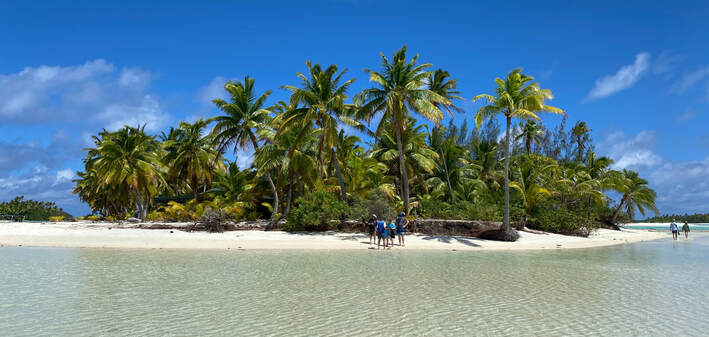|
It is predicted that by 2050, as many as 1.5 billion people might be at risk of displacement due to environmental changes and related conflicts, according to a report by the IEP. Countries of all continents are already experiencing the effects of a warming planet, and the latest COP summit in Sharm El-Sheikh took place in the wake of flooding in Pakistan, drought in the horn of Africa, and a record-breaking summer heatwave in Europe. It cannot be denied that climate change-driven events are transforming the world we live in. Extreme weather is causing an average of 20 million to be made homeless each year. But are these people refugees? A refugee is somebody who has been forced to leave their home because of war, persecution, or a natural disaster. But according to the specific legal definition outlined in the 1951 Refugee Convention, the word ‘refugee’ is limited to persons facing persecution, meaning many people displaced by long-onset effects of climate change do not qualify for asylum.
When discussing people displaced by rising sea levels, floods, droughts, soil salinization, or other events, we might refer to ‘climate refugees’. There is a myriad of qualifiers often attached to the word ‘refugee’ - adjectives such as ‘economic’, ‘political’, or ‘illegal’. The term ‘climate refugee’ - for which the United Nations is yet to provide an official definition - has become an umbrella term for all those displaced due to climate change and its many after-effects. But the term has a tendency to simplify narratives around displacement, and suggests that all people fleeing from environmental events can be grouped together in one category. However, in reality, it is seldom this simple. Even climate change events themselves are complex, and are grouped into two categories: slow-onset and rapid-onset, with the former defined as gradual changes, such as sea level rise, loss of biodiversity, and drought, and the latter defined as unpredictable events such as typhoons or floods. Both categories can displace people and generate refugee populations. ‘Climate refugee’, or indeed any other qualifying term for a refugee can be limiting, since it is a rarity that people leave their host country for one reason alone, and oftentimes environmental issues lead to conflict, such as the struggle over dwindling natural resources. One example of this is how the recent drought in East Africa has sparked inter-communal tensions and conflict, displacing tens of thousands of people in the Sahel region. Countries in this region rely mainly on subsistence farming and livestock, making them amongst the most vulnerable to the effects of climate change. After three consecutive failed rainy seasons, not only is famine looming, but the competition for water supplies has led to armed conflict in some areas. More than half a million people have already crossed the Chadian border to seek refuge, according to U.N. estimates. Each refugee has their own reason for moving, however, these reasons more often than not have their roots in climate change. Whilst these people are arguably ‘climate refugees’, having migrated due to the drought, the conflict caused by insufficient water supplies means many of them are not migrating for environmental reasons alone. So, what does the term ‘refugee’ really define? The 1951 Refugee Convention - which forms the basis for most asylum systems worldwide - provided a limited definition of ‘refugee’ which does not apply to those displaced by climate change. It defines ‘refugee’ as someone who possesses a well-founded fear of persecution on the grounds of race, religion, nationality, social group, or political opinion. This limited definition became a source of problems in 2015, when the Teitiota family from Kiribati was denied asylum in New Zealand. Ioane Teitiota, a resident of the island of Tarawa which lies no more than three metres above sea level at its highest point, left his home due to a lack of clean water, and a worry that the rising sea levels would soon swallow up his island altogether. He said: “I'm the same as people who are fleeing war. Those who are afraid of dying, it's the same as me.” He was deported back to Kiribati for overstaying his visa in New Zealand, and the supreme court dismissed his and his family’s case, on the grounds that they did not fit the definition of refugee laid out in the 1951 convention. The court also “expressed concern about expanding the scope of the Refugee Convention and opening the door to millions of people who face hardship due to climate change.” The 1951 Refugee Convention was a product of post-war Europe, a time when the words ‘climate change’ had not yet entered the public vocabulary, and the majority of refugees with which the convention was concerned were European - victims of fascist regimes, Spanish republicans, those displaced by the Second World War and those who had been persecuted. Of the twenty-six states which participated in drafting the convention, seventeen were European. The convention’s euro-centrism is not only problematic, but its definition of a refugee is no longer adequate to describe the plight of many displaced persons who have been forced to flee from the impacts of climate change on their home countries. There is an argument that wealthier countries from the global north are reluctant to expand the definition of refugee to include those affected by climate change, particularly as the number of ‘climate refugees’ is expected to grow. In 2021, U.N. expert Ian Fry reported that 59.1 million people were internally displaced in 2021, a number much higher than that of those displaced by armed conflict. This year, more people are again set to be displaced by climate change than by any other event. By using a limited definition of ‘refugee’, this means the number of people to whom wealthier countries like New Zealand will have to grant asylum will be less. Conflicts can end, allowing displaced people to return in some cases. But climate change is changing our planet in a way that might never allow displaced people to return to their home countries. Long-onset events like drought, desertification, or soil salinization caused by sea level rise leave landscapes irreparably damaged. Once climate change forces people to move, the place they choose to settle might be where they must settle for good. Some islands in the South Pacific are literally at risk of disappearing altogether - engulfed by rising waters like a modern-day Atlantis. Scientists predict Tuvalu could become uninhabitable in the next fifty to one hundred years. Indonesia already plans to move its capital to the island of Borneo to escape the rising waters around Jakarta, at the same time pledging $40 billion in an attempt to prevent the old capital from sinking into the ocean. In the case that countries disappear altogether, what happens to their inhabitants? Is it possible to have citizenship for a country that no longer exists? COP27 this year seemed to be the peak moment to discuss these potential realities. But, whilst climate migration was discussed on certain panels at the climate summit, it wasn’t on the formal agenda. This is a worrying fact for many, especially since it seems ‘climate refugees’ are here to stay, with recent projections pointing to 1.2 billion displaced by 2050, and 1.4 billion by 2060. These displacements also occur disproportionately within developing countries, which have historically emitted the least greenhouse gases. Whilst more economically stable countries are not immune to the effects of climate change, they often have more resources to be able to withstand them. It is down to these developed countries to ensure resources are pooled in the right places to tackle climate change and aid those displaced by it. Climate migration wasn’t front and center at COP27. But there have already been calls for refugees and internally displaced people to have seats at the COP28 table, so that their voices might be heard, and necessary changes implemented. The UNHCR writes that: “The cries of displaced people and their host communities and countries will only get louder, which is why loss and damage must become a standard COP agenda item” We are likely to see a large increase in the number of people displaced by extreme weather events over the coming decades, and this is why it may become a necessity to rethink our previous definition of a ‘refugee’. At the moment, it does not fully encompass the situation of those currently being displaced - those fleeing from climate-generated conflicts caused by the drought in East Africa, or South Pacific islanders whose homes and livelihoods are shrinking more and more each day. Refugee issues are complex, and displacement is rarely caused by one factor alone. It can be environmental, but also political or economic. The good news is, we already have all the financial tools and resources we need to fight climate change. The difficulty lies in how countries decide to organise, divide and implement them. COP28 needs to ensure that climate migration is placed at the top of the agenda so that decisions might be made with displaced people in mind.
0 Comments
Leave a Reply. |
Author
Iona is a third year European and Middle Eastern Languages student at Oxford University. She researched and wrote this article as part of the Oxford University Micro Internship programme. |


 RSS Feed
RSS Feed

